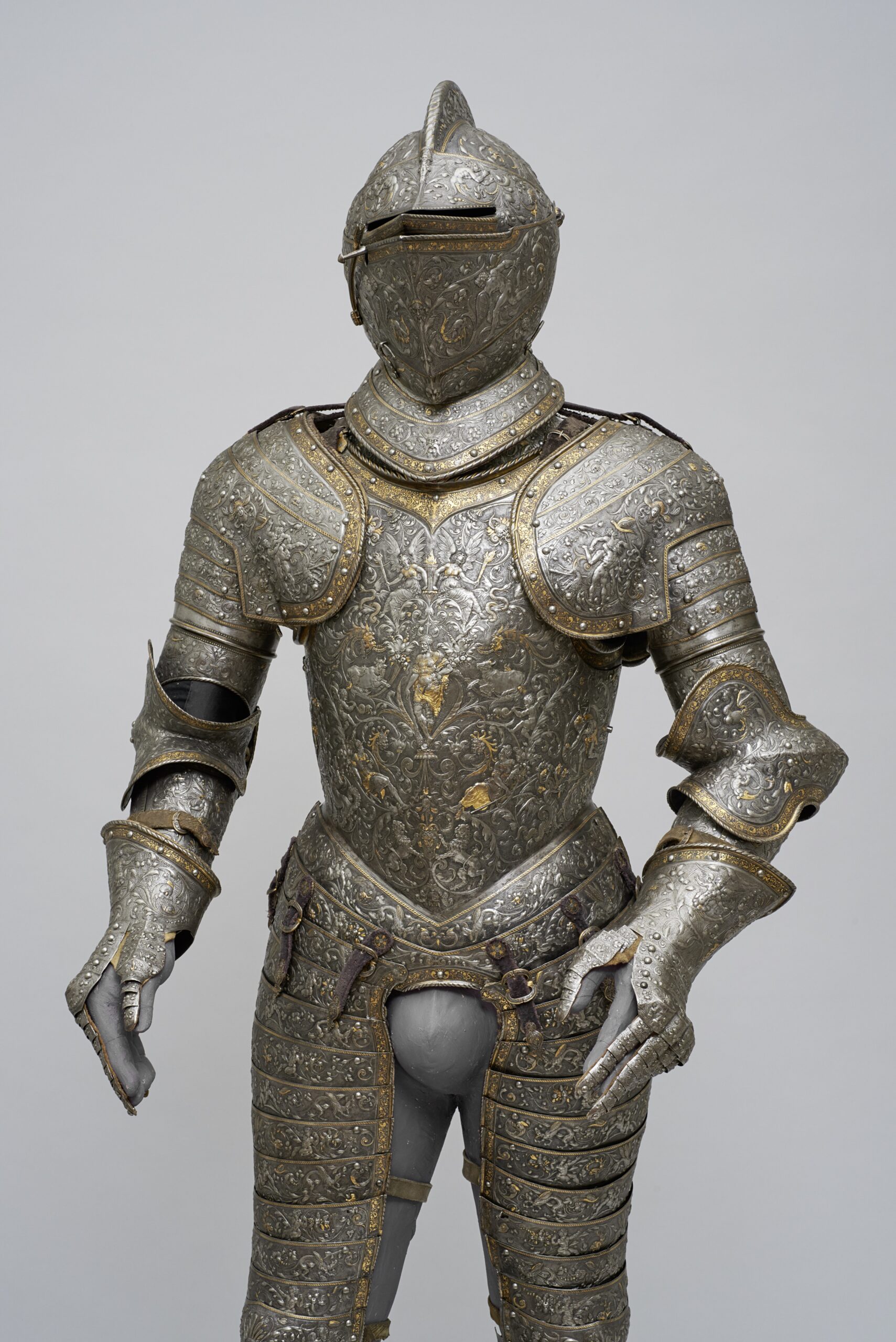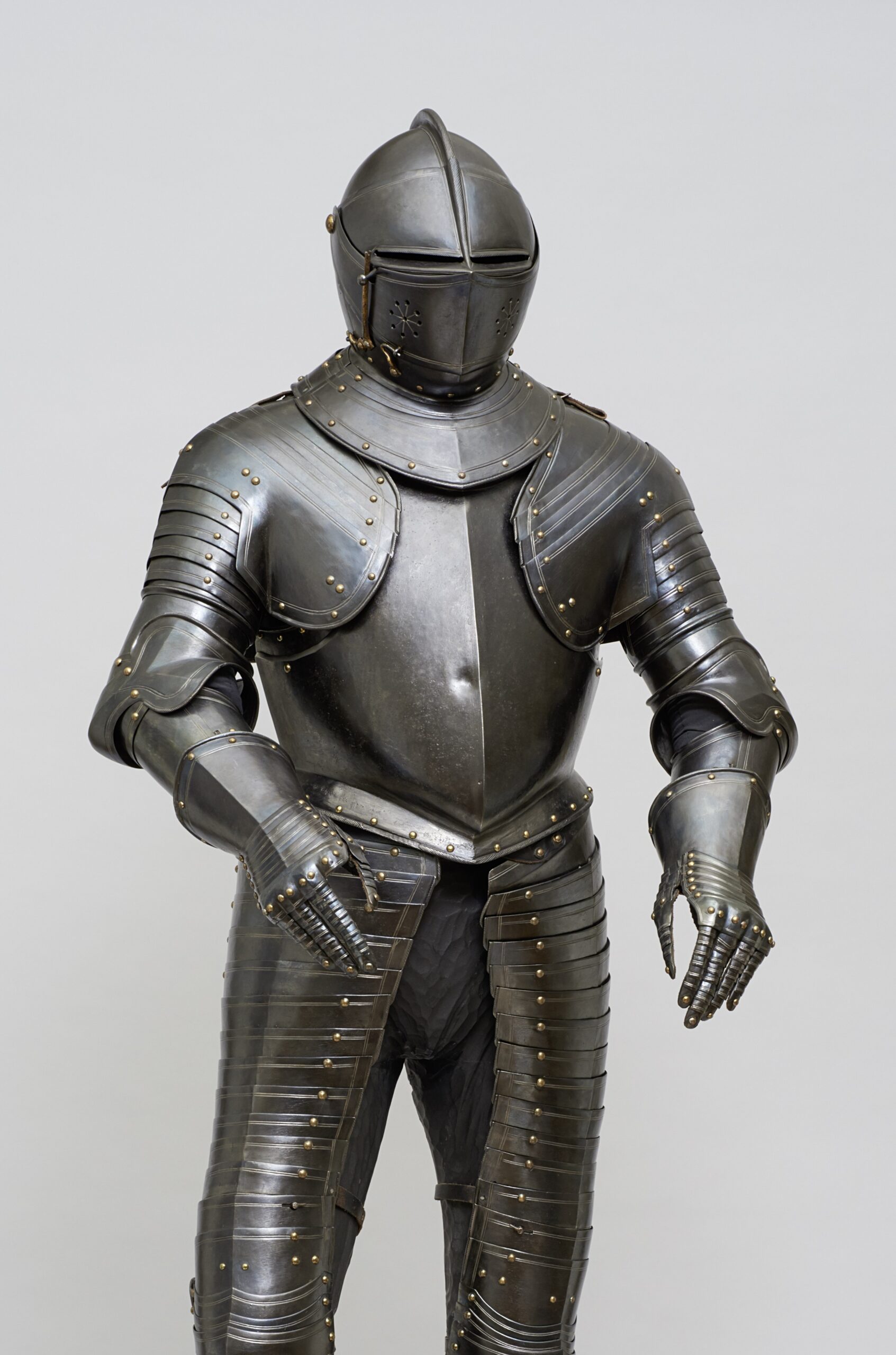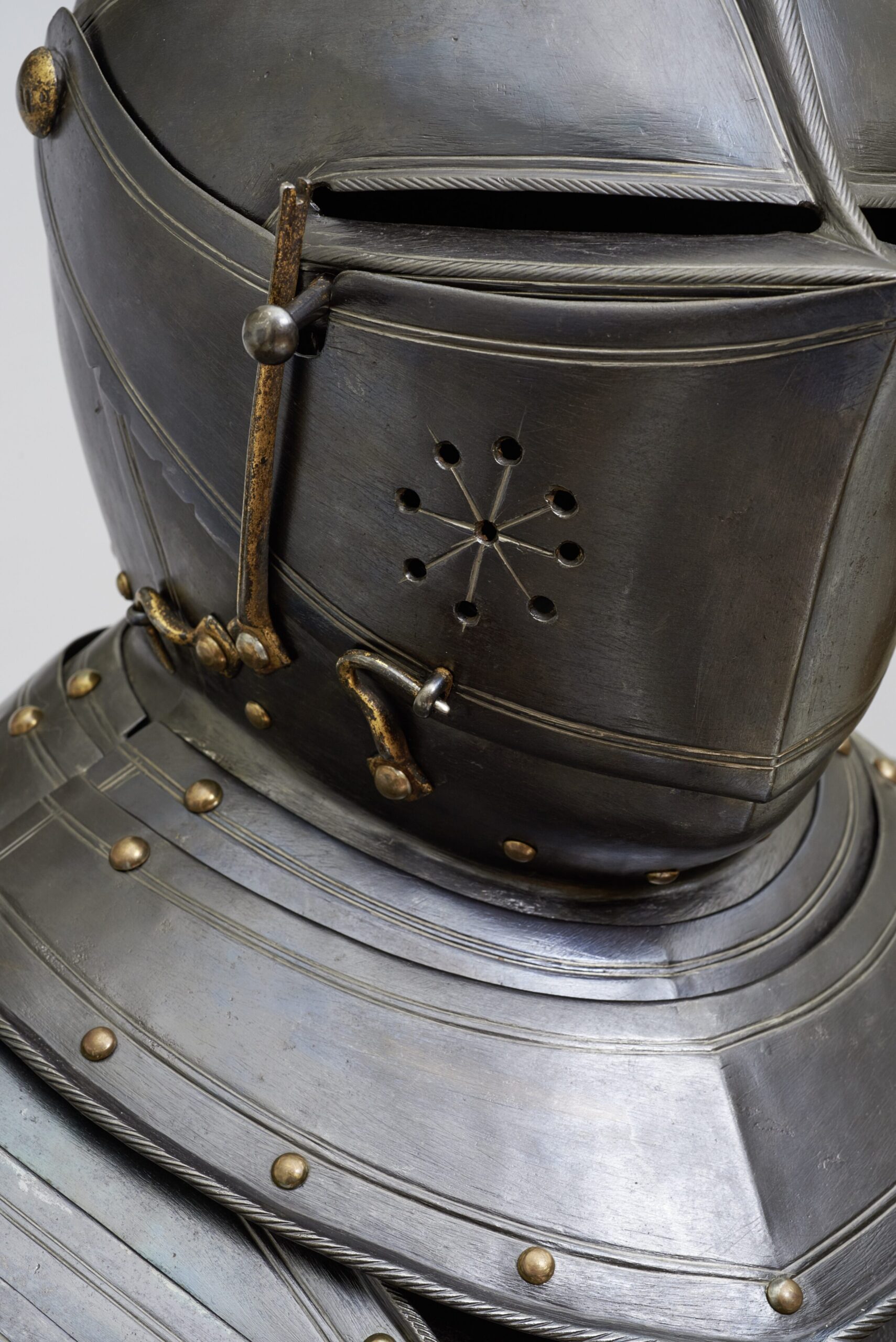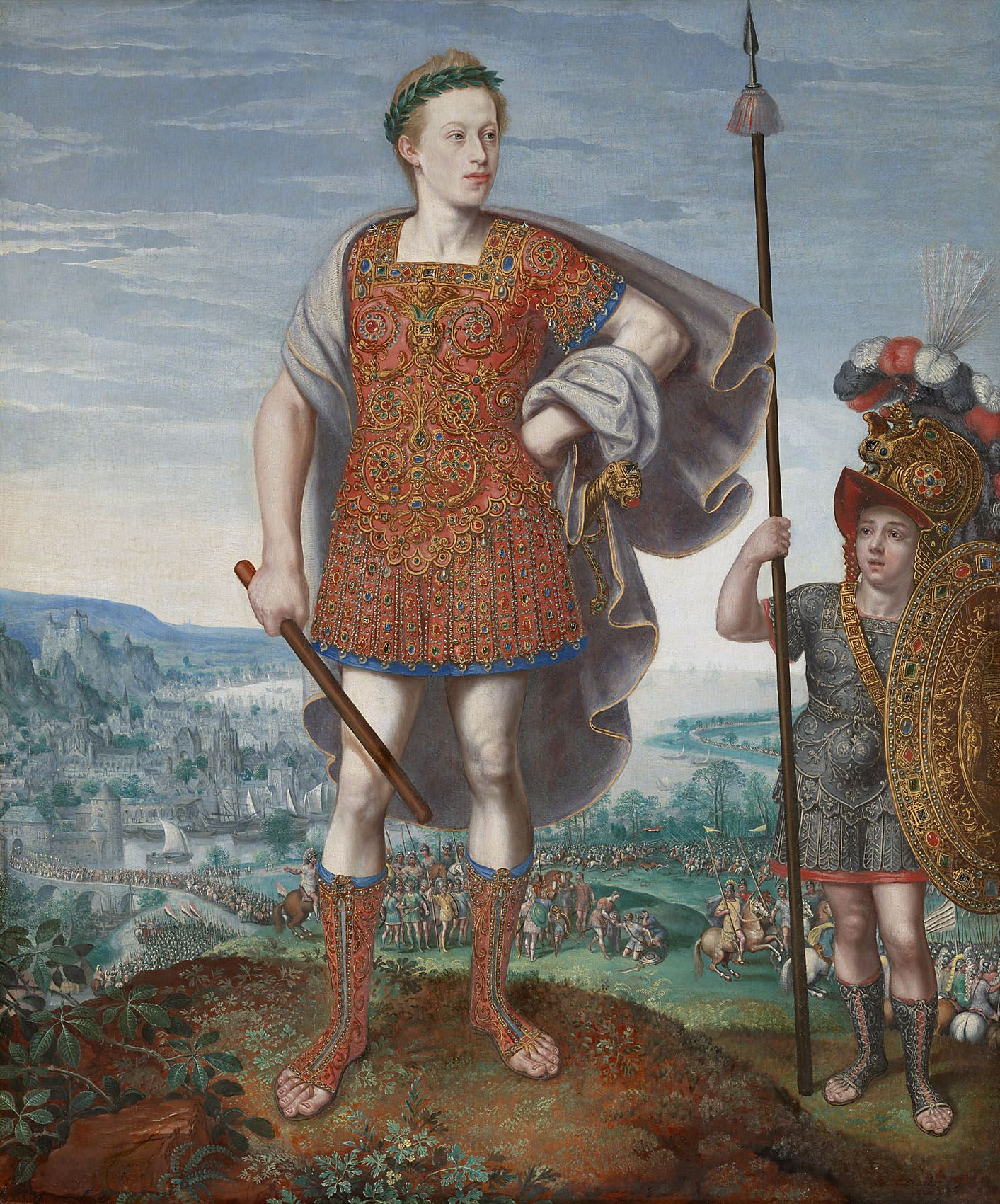This article was first published in the CODART eZine, no.9 Summer 2017.
Armor is steel clothing. Like shirts and trousers, it offers protection to the human body: textiles help to insulate the body from the cold and shield it against the sun; metal absorbs the blows of swords and lances. But like clothes made of costly silk or wool, bespoke armor once served to enhance the wearer’s image and display his social rank. Plate armor was one of the most expensive and most noble articles of men’s clothing in the late Middle Ages and the Renaissance. It was worn not only in battle but also at triumphal processions, parades and festive tournaments. Armor documented its wearer’s high social standing and his political and military power.
It therefore stands to reason that armor was subject to the same trends in fashion as textile clothing. Indeed, the stylistic changes of textile fashions are closely mirrored in armor. For example, in the late fifteenth century, Burgundian noblemen wore long pointed shoes and tight-fitting clothes that emphasized elegance and weightlessness and accentuated the wearer’s figure. The armor produced north of the Alps around 1480 looked exactly the same; even the elegant poulaine (the long, pointed toe of a shoe) was molded in steel. But in the early sixteenth century the influence of the Italian Renaissance grew stronger, and round, voluminous forms became fashionable. Once again, the new style was enthusiastically taken up in both textile clothing and plate armor.
Regardless of its form or shape, a piece of armor or article of clothing reflects the Zeitgeist, expressing the period’s taste and ideals. A good example is the Hercules Armor, made about 1555/60 for Archduke (later Emperor) Maximilian II; its entire surface is covered with ornamentation and mythological scenes (figs. 1, 2, 6, 10). Maximilian’s armor symbolizes the universal claim to power of the Habsburg Empire under Emperor Charles V, a claim buttressed by references to antique precursors, alleged ancestors and the Catholic faith.
-
Fig. 1: The so-called Hercules Armor of King (Emperor) Maximilian II (1527-1576), Franco-Flemish, ca. 1555/60
Kunsthistorisches Museum, Vienna
- Fig. 2: Detail of The so-called Hercules Armor of King (Emperor) Maximilian II
Maximilian’s Hercules Armor is one of the great masterpieces of the refined and sophisticated style typical of the armorers active in Flanders and northern France in the 1550s and 1560s. One of the most important centers of this style was Antwerp, and one of its leading master’s was Eliseus Libaerts (before 1530 – after 1569), to whom some art historians attribute the Hercules Armor now in Vienna. We know that Libaerts produced similar works for the courts of Sweden and Saxony in the 1560s, among them the armor made for Eric XIV of Sweden (1533-1577) in 1560/62 (Stockholm, Livrustkammaren, inv. no. 2505) and the so-called Hercules armor for man and horse (1563/65; Staatliche Kunstsammlungen Dresden, Rüstkammer, inv. no. 100).
In contrast, the plate armor made for Maurits, Prince of Orange in ca. 1590 (figs. 3-5) is characterized by a sober elegance and dispenses almost entirely with decoration. Only the engraved ornamental decor, the golden yellow studs and the originally blued (but now darkened) surface testify to the fact that this armor, too, reflects a specific aesthetic ideal – that of the approaching Golden Age of Dutch art, the time of Rembrandt, Hals and Vermeer.
-
Fig. 3: The cavalry armor made for Maurits, prince of Orange (1567-1625), Netherlandish, ca. 1590/95
Kunsthistorisches Museum, Vienna
- Fig. 4: Detail of The cavalry armor made for Maurits, prince of Orange
- Fig. 5: Detail of the helmet of The cavalry armor made for Maurits, prince of Orange
The armor made for Prince Maurits came into the possession of the Habsburgs in the late sixteenth century. Archduke Ferdinand II, ruler of the Tyrol (1529-1595), acquired it for his so-called Armory of Heroes (Heldenrüstkammer) at Ambras Castle, which, at his death in 1595, comprised the arms and armor of some 180 famous European military commanders of the Renaissance (fig. 7). In 1806, during the turmoil of the Napoleonic Wars, the armor came to Vienna as part of the Ambras Collection and subsequently ended up in the Kunsthistorisches Museum.
-
Fig. 7: Portrait of Maurits, prince of Orange, in Jacob Schrenck von Notzing, Armamentarium Heroicum, no. LXVIII, Innsbruck 1603
Kunsthistorisches Museum, Library, Vienna
-
Fig. 8: Lucas van Valckenborch (1535-1597), Portrait of Archduke (later Emperor) Matthias (1557-1619) as Publius Scipio Africanus major, commissioned during his time as governor of the Spanish Netherlands, 1580
Kunsthistorisches Museum, Vienna
The great differences in style between the armors commissioned by Emperor Maximilian and Prince Maurits of Orange, respectively, are only partly explained by their different purposes – one a protection in war, the other a status symbol. Maximilian’s magnificent armor was designed to denote his exalted rank at court or in similar settings – see, for example, the likeness of Archduke (later Emperor) Matthias as governor of the Spanish Netherlands (fig. 8) – but it could also function as a full-fledged, protective steel garment.
Prince Maurits’s armor, on the other hand, features the latest technical developments in battle armor of the late sixteenth century. Not only is it equipped with short, knee-length cuisses (to protect the front of the thighs), it was also bullet-proof, as shown by the small dent on the breastplate. Such a dent on the breastplate was not the result of a hit in battle but rather the armorer’s seal of quality. It served to verify that the armor was proof against firearms, which were rapidly becoming increasingly powerful.
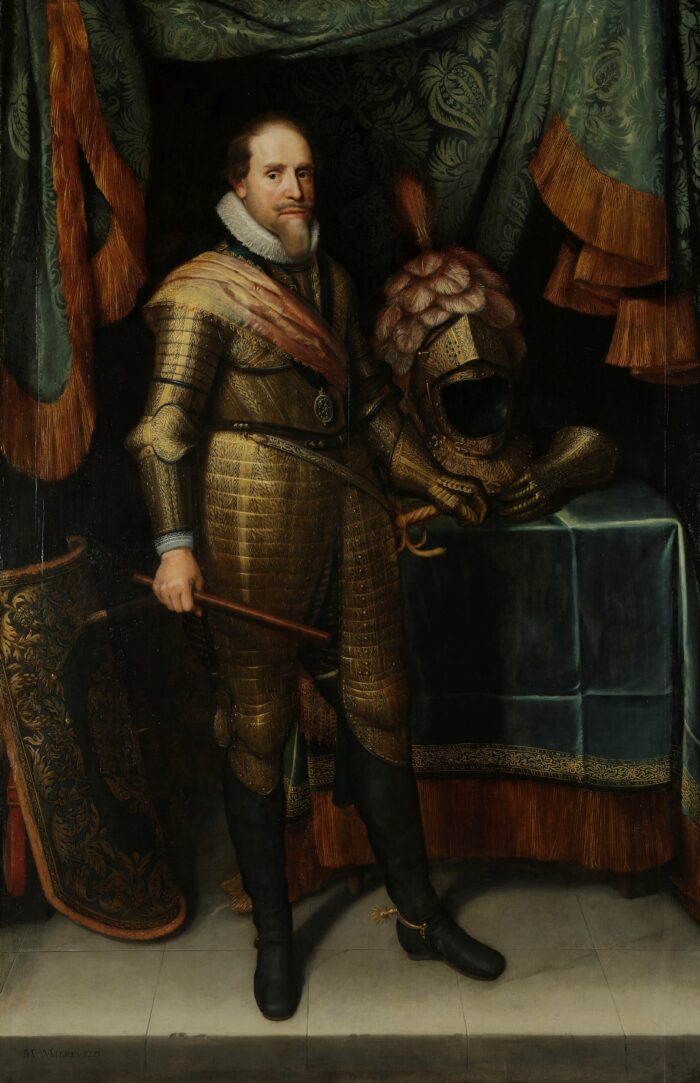
Fig. 9: Michiel Jansz van Mierevelt (1566-1641), Portrait of Maurits, prince of Orange, ca. 1613/20
Rijksmuseum, Amsterdam
Yet contemporary Dutch armor intended mainly to document the wearer’s elevated social rank would not have looked much different. The armorer might have added some etched and gilt decor, without however undermining the essentially protective nature of the harness. The main difference, as will be discussed below, consisted of elaborate embellishments and trappings, including costly and colorful textiles, feathers and even pieces of jewelry (fig. 9).
Steel and textiles could not differ more in character: one is hard and cold, the other soft, subtle and warm. And yet it is precisely these two contrasting materials that are combined in late-medieval and Renaissance fashion in complex and sometimes surprising ways. In fact, even now, in the twenty-first century, we still find echoes of the intimate connection of steel and fabrics popular in the early-modern era.
Today the jacket is ubiquitous in leisure and business clothing, but the origins of this garment go back very far indeed, to military clothing of the fourteenth century. The undergarment worn beneath the steel breastplate that came back into use in the course of the thirteenth and fourteenth centuries had to fit snugly against the body. For this reason it was cut to fit the figure exactly, in stark contrast to contemporary civilian clothing, which was generally loose-fitting.
Such unprepossessing, purely practical articles of clothing developed from the mid-fourteenth century onwards into an independent, refined civilian overgarment – the doublet (Schecke in German, pourpoint in French). The silk doublet of Charles of Blois, duke of Brittany, which is now in Lyon dates from precisely this time and documents this influential innovation in fashion born of the interaction of armor and textiles.
In later times, too, fashions in clothing imitated plate armor. The jerkin, for example, worn by both men and women until late in the sixteenth century, took the form of a stiff textile breastplate. The ideal of beauty as represented by the armored body is undeniable here. Jerkins were padded – sometimes very thickly indeed – with horsehair, wool, cotton and old rags, as seen, for instance, in Hendrick Goltzius’s Standard Bearer of 1587.
To stabilize the shape of these jerkins, supports made of wood, whalebone and even metal were integrated into the garment. Benvenuto Cellini (1500-1571) reports in his Autobiography that, during a knife attack in Rome, the blade of the murder weapon screeched to a halt in the victim’s jerkin. The fact that he remained unharmed suggests that he was wearing a pretty solid jerkin. And we know that in 1549 Eleanor of Toledo (1522-1562) ordered two iron corsets from Master Lorenzo, one of the armorers working at the Medici court.
The influence was reciprocal, however, for it can also be shown that textiles had an impact on metalworking. Fifteenth- and sixteenth-century armorers always tried to mitigate the hardness and rigidity of steel by imitating contemporary fashions. For example, they decorated the surface of plate armor with patterns that recalled costly silk fabrics, as seen on an armor (French, ca. 1555/60; Paris, Musée de l’Armée, inv. no. G 119) commissioned by Francis II of France (1544-1560).
They also imitated the structure of chain mail in order to create the illusion of mail worn underneath the armor, seemingly shining through at the neck or the knees. They likewise etched ornaments in the shape of chains and medallions onto the surface of the armor. For example, a breastplate, probably made by a Netherlandish armorer for the young Philip the Fair in 1488/90, displays the chain of the Order of the Golden Fleece (Vienna, Kunsthistorisches Museum, Collection of Arms and Armor, inv. no. A 109a).
Etching was one of the most important techniques for decorating plate armor. Metal etching – i.e. an artistic process that involves using strong acid or mordant to incise a drawing onto a metal ground – is known mainly from printmaking and was made famous by artists such as Rembrandt. Yet this technique was invented by armorers. Swordsmiths were first recorded using the etching technique in the late thirteenth century, and armorers in southern Germany and the Low Countries were experimenting with it as early as the 1470s.
It was not until shortly before 1500 that the etching technique developed for the decoration of plate armor was first used in printmaking. The earliest extant etchings are by Daniel Hopfer (1471-1536), a native of Augsburg who worked both as a printmaker and a decorator of armor. Karel van Mander records in his Schilder-boeck (Haarlem 1604) that Lucas van Leyden (1494-1533) was introduced to the technique of etching by an armorer: “He supposedly learned engraving from someone who etched armor, biting into it with acid, and also had some instruction from a goldsmith.”
Every armor, in fact, represents a symbiosis between steel and textiles, for armor required both textiles and leather in order to function at all. Leather straps joined together its countless individual steel pieces, turning them into a flexible whole. The padded lining enhanced the wearer’s comfort and, during battle, cushioned enemy blows. Moreover, custom-made armor was always lavishly embellished and fitted with costly, colorful fabrics, only a few examples of which have been preserved.
With his above-mentioned blued armor Maurits of Orange, would have sported high leather boots, colorful breeches and a ruff – nothing of which has survived. In a later portrait by Michiel van Mierevelt (fig. 9) Maurits wears a golden armor with costly accessories such as a brightly colored sash, a rapier, a plumed helmet and a gold chain with a medallion.
The Franco-Flemish mannerist Hercules Armor produced around 1555/60 in Paris for Archduke (later Emperor) Maximilian II (fig.10) features a small capsule at the neck that once held a plume that was worn on festive occasions, possibly augmented with gold agrafes. In addition, the small holes visible on the crest of the helmet suggest the attachment of additional trappings and adornments, probably another plume or feathers. Records document that other armors were embellished with, for example, diadems, laurel wreaths or earrings. In the late Middle Ages and the Renaissance, plate armor was a Gesamtkunstwerk, a total work of art, rich in color, form and texture.
The working methods of armorers and tailors were also more similar than one might at first assume. For example, armorers made use of the same aids as tailors in their endeavors to supply well-fitting (steel) attire. Armorers also relied on paper patterns when producing the individual pieces comprising an armor. They used jerkins and breeches to gauge the wearer’s proportions – we know, for example, that this was the case for the armor commissioned by Emperor Maximilian in 1512/14 for his grandson Charles V. But unlike tailors, armorers were often confronted with the problem that their clients were unavailable for a first fitting or even a first measuring. Armorers required a well-equipped workshop and running water for their turning-lathes, which made them far less mobile than tailors, or their peripatetic noble clients.
This created potentially expensive problems. It was often difficult for an armorer to determine from the breeches sent by his client “whether the feet were crooked or straight,” to quote from documents relating to an armor commissioned in 1557/58 by Duke August, Elector of Saxony. Only in exceptional circumstances did an armorer take to the road to measure the girth and inner leg of a king or emperor. It was for this reason that Eliseus Libaerts journeyed in 1562 from Antwerp to Stockholm, Jörg Seusenhofer in 1539 from Innsbruck to Paris, and Kolman Helmschmid in 1529 from Augsburg to Madrid. Philip II of Spain decided to take the opposite approach to ensure that the armor he was ordering would be a perfect fit. In Spain, he had wax casts made of his legs that were then sent as a model to his armorer in Augsburg.
But the apex of this complex relationship between steel and textiles in the early-modern period are armors produced around 1510/20 that reflect and imitate the formal vocabulary of contemporary male fashion. Such armor was not simply decorated with textile patterns; its steel parts might also comprise slashed or puffed hose, helmets shaped like hats, even poncho-like steel cloaks. In these cases, the rigid steel assumes the pliable shape of a soft textile. Such armor is made of steel but conceived like fabric.

Fig. 11: Kolman Helmschmid (1471-1532), The Landsknecht armor of Wilhelm von Rogendorf (1481-1541), Augsburg, dated 1523
Kunsthistorisches Museum, Vienna
It was probably a Flemish master who, in 1515, fashioned an armor for Henry VIII of England that included what was then a highly fashionable, knee-length pleated tonlet. Such armors are often called ‘costume armor’, and the most famous example was produced in Augsburg in 1523: the Landsknecht armor of Wilhelm von Rogendorf (fig.11). Its steel sleeves feature heavy, soft folds and numerous slashes. Rogendorf’s armor is a tour de force of metalworking, unequalled in technical virtuosity and artistic bravura.
Works of this kind might seem curious, even outlandish, to twenty-first-century viewers. After all, our modern ideas about armor have been strongly influenced by misconceptions dating back to the nineteenth century and reinforced by plays and Hollywood films in the twentieth, and we still cling to the inaccurate image of pitiable knights, weighed down by crushingly heavy, squeaking armor.
The leading armorers of the late Middle Ages and the Renaissance were highly paid and respected artists, some of whom were even elevated to the nobility. Armors produced by these masters usually cost much more than a painting or a piece of sculpture. Worn in triumphal processions, parades, masquerades and tournaments, these extremely elegant and fashionable articles of clothing were laden with symbolism. They were, in fact, fashion made of steel.
The Collection of Arms and Armor of the Kunsthistorisches Museum in Vienna
The Collection of Arms and Armor in Vienna is one of the most important and best-documented collections of its kind in the world. It comprises the rich holdings of arms assembled by the Habsburgs at Ambras Castle near Innsbruck and the former imperial armory in Vienna. Reflecting the long and rich history of the House of Habsburg, the collection contains pieces from nearly every part of Europe.
The Collection of Arms and Armor also houses one of the most important collections of late-medieval Burgundian weaponry, as well as a number of works by Netherlandish masters of armory and metalworking of the late fifteenth and sixteenth centuries, among them the lavishly decorated Burgundian rapiers, swords, knives and daggers made for Duke Philip the Good of Burgundy (1396-1467), for the young Emperor Maximilian I (1459-1519) and for Philip the Fair (1478-1506), as well as a tournament harness by Master “h” (Netherlandish, ca. 1500), pieces of a plain armor (Netherlandish, ca. 1585) made for Alessandro Farnese, governor of the Spanish Netherlands (1545-1592), and a richly damascened (i.e. inlaid) Netherlandish armor of ca. 1570.
One of the fundamental problems of presenting a collection of historical armor is the frequently inferior quality of the figurines used to display it. Contemporary sources bear witness to the importance once attached to the elegance and sumptuous appearance of armor. At a tournament, ill-fitting armor sometimes resulted in the loss of points. But in the nineteenth and twentieth centuries most armors were displayed on anatomically incorrect figurines that did not do justice to these magnificent steel garments.
A main focus of the Collection of Arms and Armor of the Kunsthistorisches Museum in Vienna is the improvement of the installation of our collection. We have collaborated with sculptors to design new figurines that correctly reflect human anatomy and proportions. Each of these life-size, “made-to-measure” wooden sculptures is produced for a particular harness, allowing us to present these restored armors in natural and lively poses.
About the author
Stefan Krause, Curator of the Collection of Arms and Armor of the Kunsthistorisches Museum, Vienna, has published widely on the social, artistic and political aspects of late-medieval and Renaissance arms and armor. His latest publication is Fashion in Steel: The Landsknecht Armour of Wilhelm von Rogendorf (New Haven: Yale University Press, 2017).
This text was translated from German by Diane Webb and revised by Agnes Stillfried.

